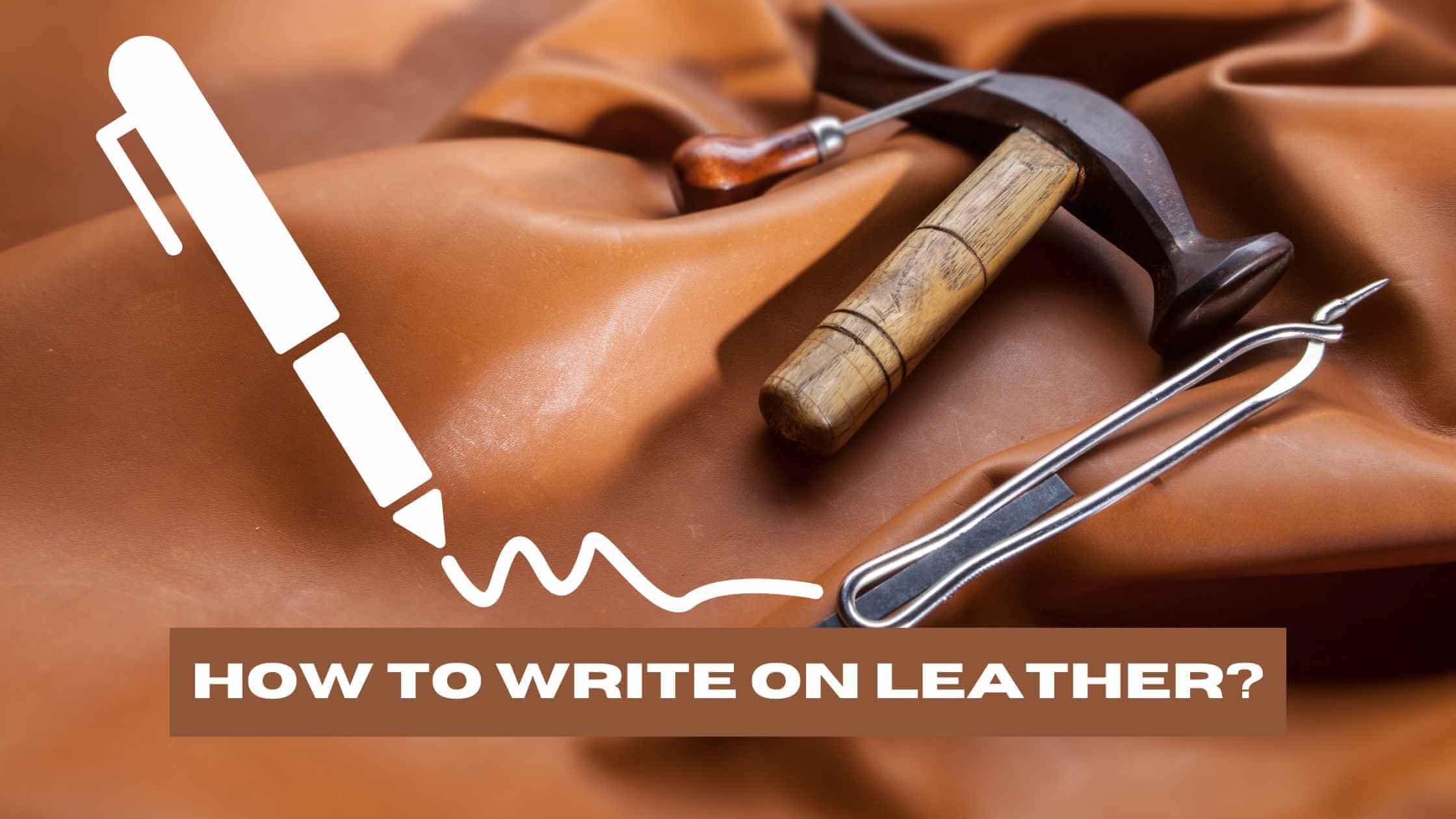I’m excited to share my insights on how to write on leather, a technique that can add a personalized touch to any leather item. This guide draws from my extensive experience, offering practical advice, fun facts, and pro tips to help you master this unique skill.
Main Points:
- Personalization Benefits: Writing on leather adds personal value, making items unique and identifiable, and can turn them into cherished heirlooms.
- Selection of Tools: Various methods like leather markers, fabric paints, and pyrography are available, each offering distinct advantages for different design needs.
- Preparation and Practice: Before writing on leather, it’s crucial to practice on scrap material and select the right tool that matches your style and comfort.
- Technique and Preservation: Patience and careful technique, such as using guides for precision, are essential; protective coatings help maintain design longevity.
- Recommended Tools: The article suggests using erasable leather pens, fabric pens, leather paints, alcohol markers, and Posca markers for different effects and finishes.
- Considerations for Different Leather Types: Techniques should be adapted based on the leather type, with special considerations for faux leather, which requires different approaches than genuine leather.
Why Write on Leather?
Leather, a luxurious and robust material, often stands out in its natural state. However, personalizing leather items adds value in several ways:
- Identification: Marking leather goods with your name or contact information prevents misplacement or theft, ensuring your valuable investments are always identifiable.
- Personalization: From artistic drawings to meaningful quotes, personalizing leather products lets your personality shine through, be it a custom-designed wallet or a uniquely decorated journal.
- Heirlooms: Inscribing messages or names on leather items like briefcases or toolbelts can turn them into cherished family heirlooms, preserving personal history for generations.
Fun Fact: Did you know that regular craft paint can be used on leather? While not the best option, it's a testament to leather's versatility.
Selecting the Right Method
Various techniques exist for writing on leather, each with its unique charm:
- Leather markers and pens: Ideal for precision and ease of use.
- Fabric paints: Offer a wide range of colors for more vibrant designs.
- Pyrography: The art of burning designs onto leather, providing a historical and artistic flair.
Practical Steps for Writing on Leather
Preparing to Write
- Choose Your Tool: Select a method that resonates with your style and comfort level. Experiment with different tools to find your perfect match.
- Learn and Practice: Before applying ink to your leather piece, practice on scrap materials to gain confidence. Remember, removing ink from leather can be challenging.
Execution and Preservation
- Take Your Time: Use guides like tape or trace outlines to ensure precision. Patience is key to avoiding mistakes.
- Protect Your Work: Once complete, apply a protective coat to prevent fading and maintain the vibrancy of your design.
Pro Tip: When using any pen or marker, apply light pressure to avoid puncturing the leather. A ballpoint pen or felt tip is preferable for their gentle application.
My Recommended Tools
- Erasable Leather Pens: Best for preliminary sketching, especially if you plan to cut or adjust the leather later.
- Fabric Pens: A simple, versatile option with a variety of colors and thicknesses.
- Leather Paints: Specifically formulated for leather, these paints offer durability and a professional finish.
- Alcohol Markers: Known for their rich colors and longevity.
- Posca Markers: High-quality paint markers, perfect for detailed work.
Can You Write on Faux Leather?
Faux leather, with its glossier surface, requires a slightly different approach. Avoid engraving or pyrography, as it reacts differently than genuine leather.
Frequently Asked Questions
- What Tools Are Needed? Leather markers, dyes, and special pens are essential.
- How to Prepare Leather? Clean the surface to remove dirt and oils before writing.
- Can I Write on Any Leather? Yes, but adapt your technique based on the leather type.
- Making Writing Permanent? Use leather dye or invest in quality leather markers.
- Drying Time? It varies, but generally, allow a few hours for the ink to set.
Wrapping Up
Writing on leather is an art that allows you to put a piece of yourself into your work. Whether it’s a simple name tag or an intricate design, the personal touch it adds is incomparable. I hope this guide inspires you to try your hand at this rewarding skill. Remember, practice makes perfect, and your unique creations will be a source of pride for years to come.

